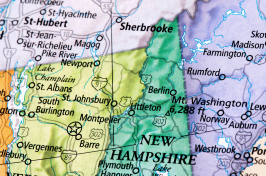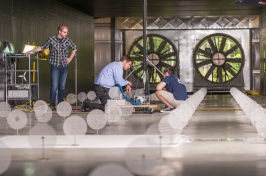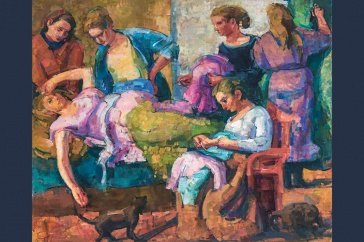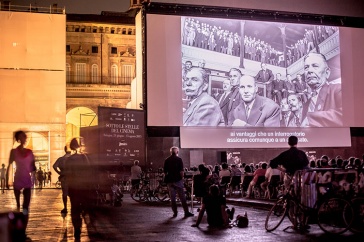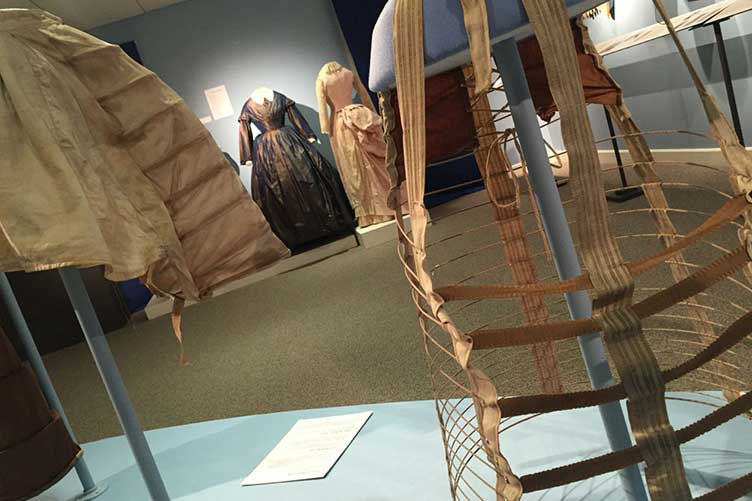
Preserved corsets from the 18th through 20th centuries are lining the walls of the University Museum on the ground floor of Dimond Library, chronicling more than 200 years of women’s relationships with beauty and fashion. They are part of the exhibit “Whalebone to Steel: The Shape of Fashion.” The title plays on elements of the corsets presented; garments of baleen (also called whalebone), rod and steel are exposed and explored. The display reveals the empowerment of women through fashion and debunks certain myths about the undergarments.
Corsets (formerly known as stays) became popular around 1800 and evolved with society’s standards. As ideal beauty changed through time to favor thinner waists, rounder hips and bigger busts, stays changed, too. Some were used to physically alter the body through back, bust and posture support and slight waist compression. Others were worn to alter how the outer layers of clothing fell upon the body, affecting only the silhouette.
The exhibit sheds light on myths that remain prevalent today. One section devalues the idea that overuse of corsets led to organ damage and the need for rib removal. On display is a 2014 MRI from a woman who wore a corset for more than a decade; it shows her organs shifted no more than they would have during pregnancy.
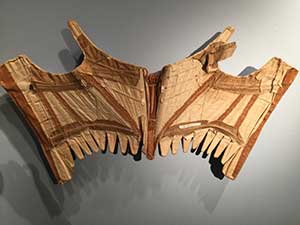
Other myths that still riddle popular media are also disproved. Remember a corseted Elizabeth Swan fainting from an inability to breathe in “Pirates of the Caribbean: Curse of the Black Pearl”? Or Rose in “Titanic” gripping a bedpost in pain as she is corseted?
“So many of the myths do disservice to women, as though they were foolishly trapped in torture devices, forced to undergo rib removal surgeries, enduring bodily harm. These things simply are not true. They lived full, active lives in their corsets,” says guest curator Astrida Schaeffer.
One of the exhibit’s most striking pieces is a photograph of several women adorned in dresses and corsets climbing snow-covered mountains.
“Women came in all shapes and sizes and did all sorts of active things that prove corsets weren’t making them faint or be just ornamental,” Schaeffer says.
“In a properly fitted corset, you could play in a brass band, climb a glacier, do stunt riding, roller-skate, you name it. You could still be as fashionable as you wanted to be, just by wearing a corset to help your dress fall just right.”
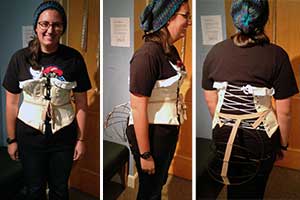
gain a better understanding of how they feel and
their uses. Here, Emily MacInnis '18 tries one on
for size. (Photo: Elizabeth Fiske '18)
Accompanying the garments are several aged cartoons that showcase societal opinions about corsets. Most ridicule the women who wore them while others make fun of the bodies of women not altered by stays.
Several skirt supports — metal hoops, bustles and paddings — are also on display, providing a complete exposition of couture. And one wall displays artists’ sketches showing how the garments were created.
The majority of the clothing on display comes from the Irma Bowen Textile Collection at UNH — pieces Bowen collected to use in the home economics class she taught between 1920 and 1940. The rest of the garments are on loan from several New Hampshire and Maine organizations, including Strawbery Banke Museum, the John Paul Jones House, the Brick Store Museum, the Wentworth Lear Historic Houses and Museums of Old York.
Sponsored by the University Museum and funded in part by the E. Ruth Buxton Stephenson Memorial Fund, the exhibit will be on display until December 18th on the first floor of Dimond Library.
-
Written By:
Elizabeth Fiske '18 | Communications and Public Affairs | epf2002@wildcats.unh.edu























